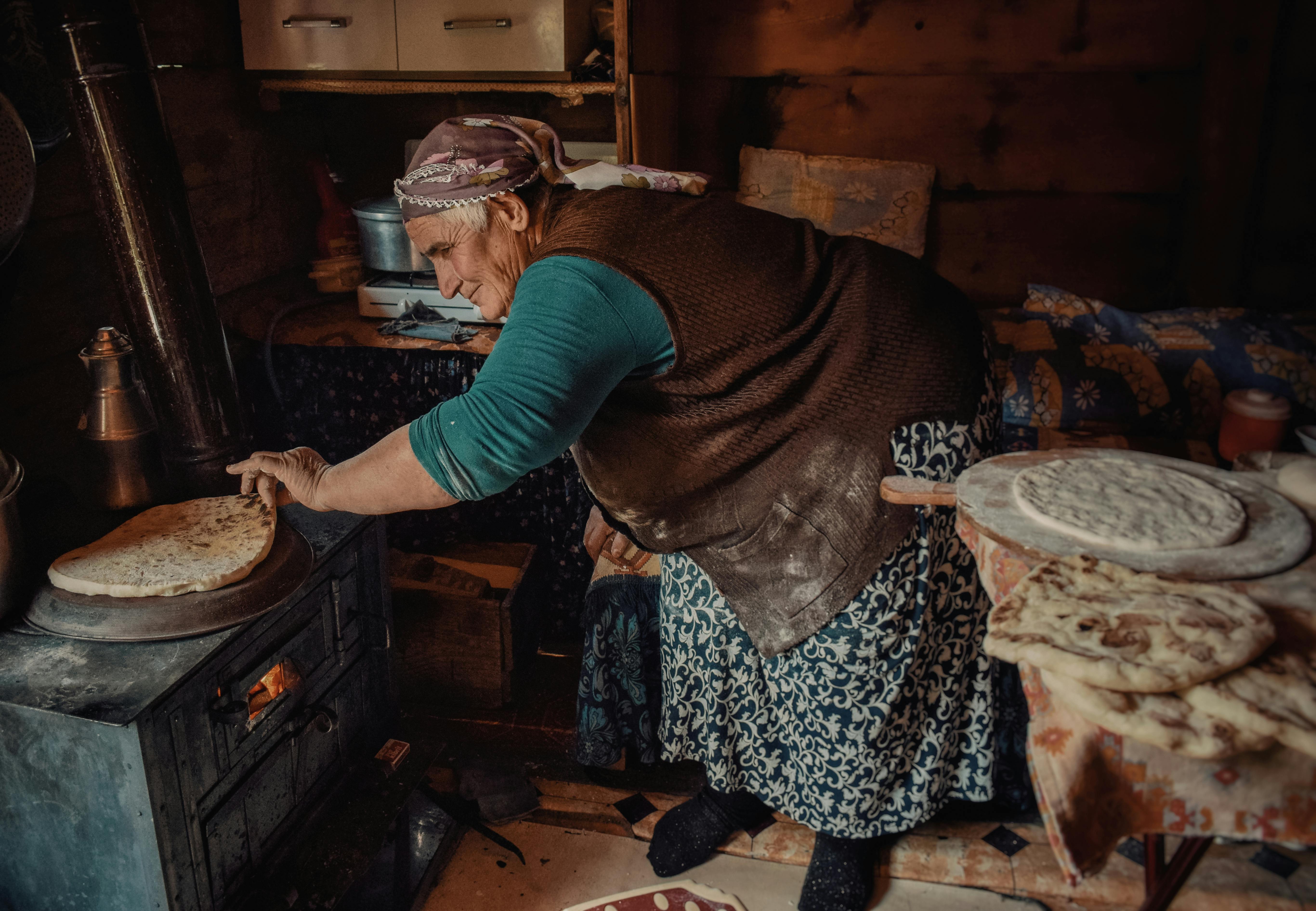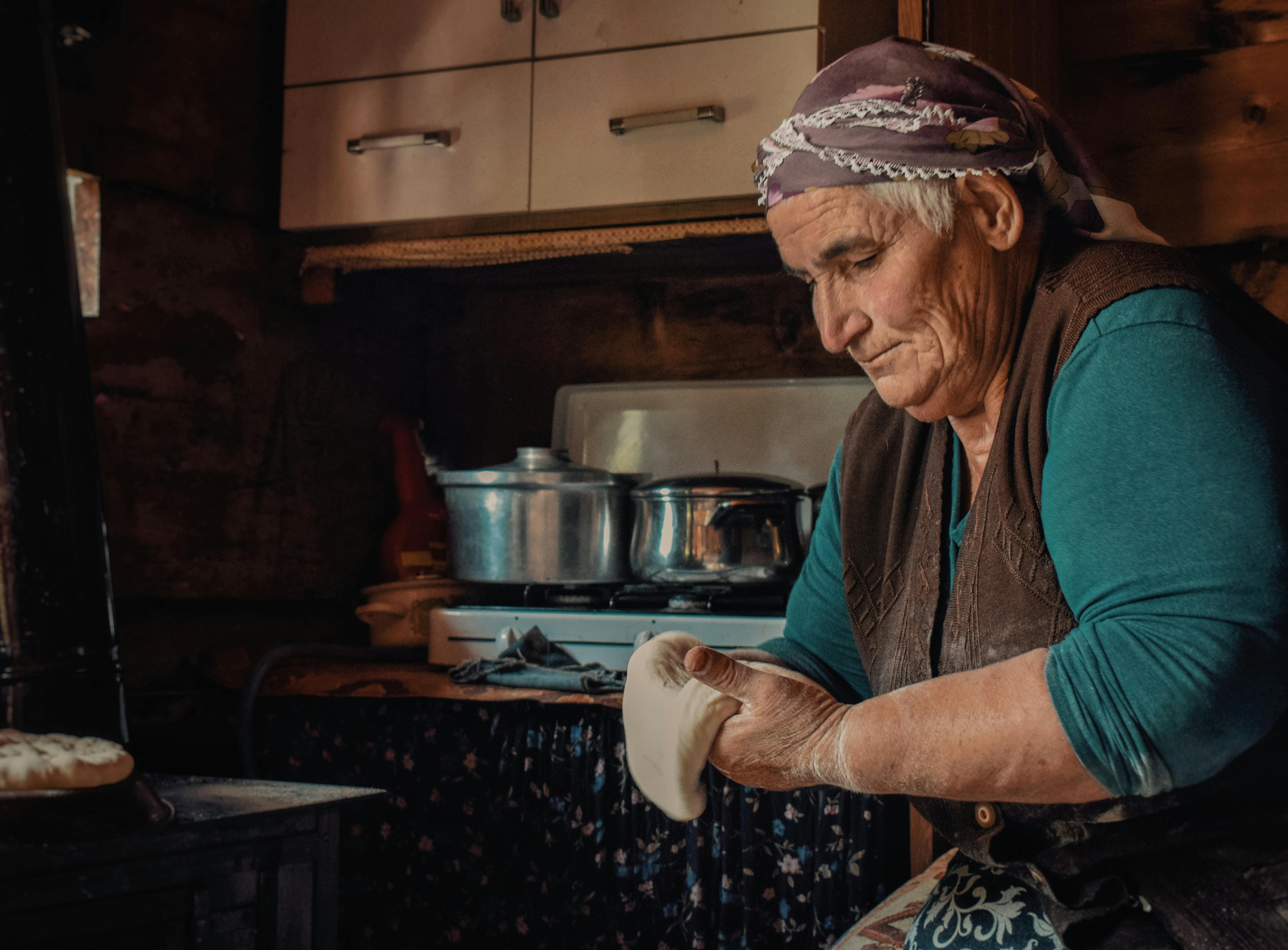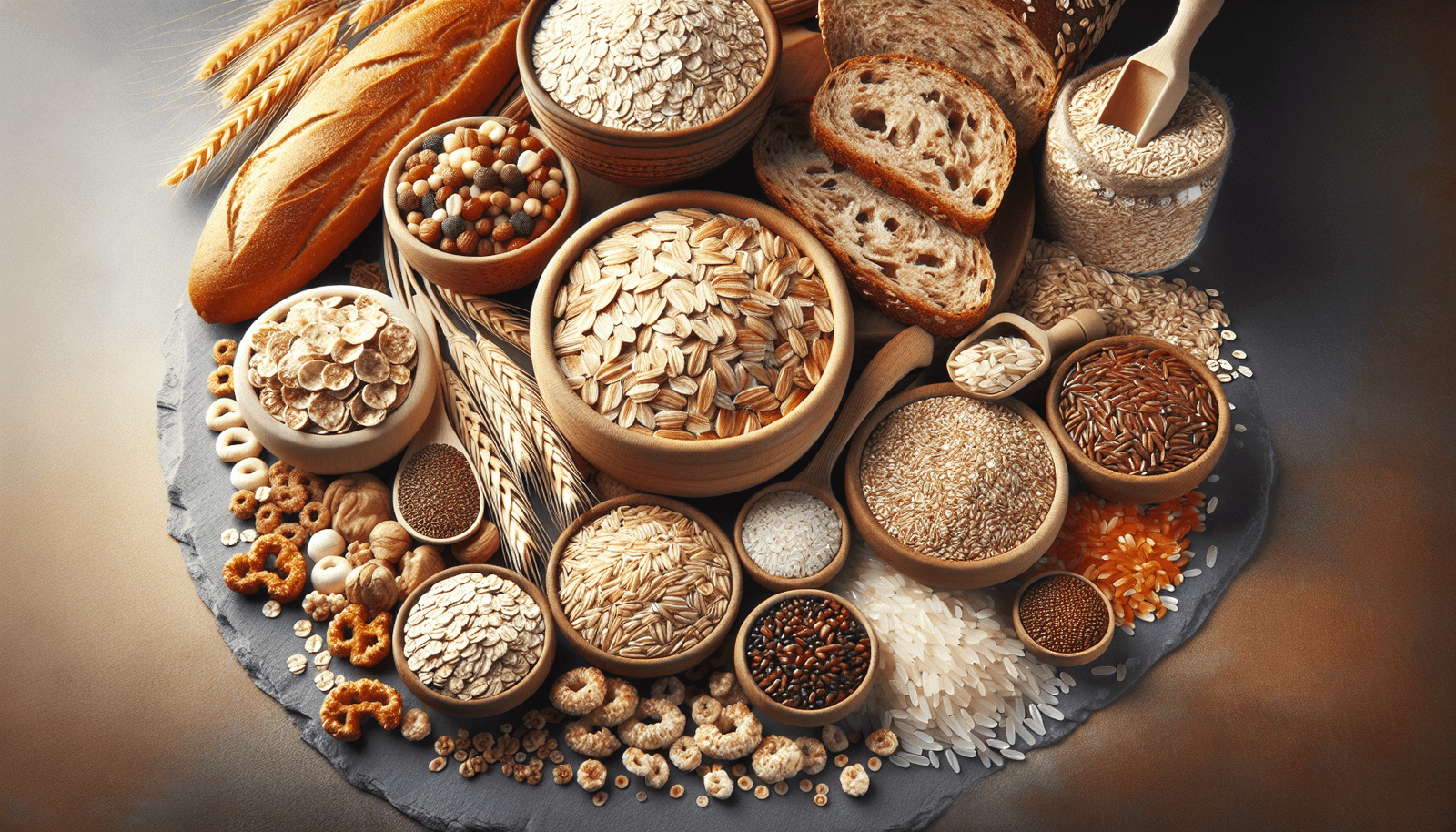Looking to boost the nutritional content of a senior’s diet? Incorporating more whole grains is a great place to start! Whole grains are packed with essential nutrients and dietary fiber that can promote good health and well-being in older adults. In this article, we will explore some of the best ways to introduce whole grains into a senior’s diet, providing a range of tasty and nutritious options that are sure to please even the pickiest eaters. So, whether you are a caregiver or a senior looking for some ideas to enhance your meals, read on to discover how to incorporate more whole grains into your diet.

Understanding Whole Grains
What are whole grains?
Whole grains are a type of grain that contains all parts of the grain kernel – the bran, germ, and endosperm. Unlike refined grains, which have had the bran and germ removed, whole grains retain all of their natural nutrients and fiber. This makes them a much healthier choice for seniors, as they provide essential vitamins, minerals, and fiber that are important for maintaining good health.
Nutritional benefits of whole grains
Whole grains are rich in fiber, which aids in digestion and helps to prevent constipation, a common issue among seniors. They also contain important vitamins such as vitamin B, which is essential for the production of energy and the maintenance of brain function. Whole grains are also a good source of minerals, such as magnesium and iron, which are necessary for proper bone health and oxygen transport in the body.
Recommended daily intake of whole grains
The recommended daily intake of whole grains for seniors varies depending on age, sex, and level of physical activity. However, a general guideline is to aim for at least three servings of whole grains per day. A serving could be a slice of whole grain bread, a half-cup of cooked whole grain pasta or rice, or one ounce of whole grain cereal. It’s important to keep in mind that portion sizes may differ for individuals, so it’s best to consult with a healthcare professional or nutritionist to determine the specific needs of each senior.
Identifying Whole Grain Foods
Different types of whole grains
There are many different types of whole grains available, each with its own unique flavor and nutritional profile. Some common examples include:
- Whole wheat: This is the most popular type of whole grain and is commonly found in bread, pasta, and baked goods.
- Oats: Oats are a versatile whole grain that can be used in breakfast cereals, granola, and even cookies.
- Brown rice: This whole grain is a great alternative to white rice and can be used in a variety of dishes.
- Quinoa: Quinoa is a nutrient-dense whole grain that is high in protein and can be used as a rice or pasta substitute.
- Barley: Barley is a hearty whole grain that is often used in soups or as a side dish.
Reading food labels for whole grain content
When shopping for whole grain foods, it’s important to read food labels carefully to ensure you are selecting products that are truly whole grain. Look for key phrases like “100% whole grain” or “whole wheat” on the packaging. Be cautious of terms like “multigrain” or “wheat flour,” as these do not necessarily indicate that the product is made with whole grains. Additionally, check the ingredient list and make sure that whole grains are listed as one of the first few ingredients.
Common whole grain foods to include in a senior’s diet
Including whole grains in a senior’s diet can be easy and delicious. Here are some common whole grain foods that can be incorporated into meals:
- Whole grain bread: Swap out white bread for whole grain bread for sandwiches and toast.
- Whole grain cereals: Opt for whole grain cereals instead of sugary options for a healthy breakfast.
- Whole grain pasta: Use whole grain pasta instead of regular pasta in pasta dishes for added fiber and nutrients.
- Whole grain crackers: Choose whole grain crackers for a nutritious snack or as a base for appetizers.
- Whole grain tortillas: Use whole grain tortillas for wraps or tacos to add a healthy twist to your meals.
Cooking with Whole Grains
Replacing refined grains with whole grains in recipes
Cooking with whole grains is a simple way to increase their consumption in a senior’s diet. Start by replacing refined grains with whole grains in your favorite recipes. For instance, swap white rice with brown rice or use whole grain flour instead of all-purpose flour in your baked goods. These simple substitutions can make a big difference in the nutritional content of your meals.
Tips for cooking with whole grain ingredients
When cooking with whole grain ingredients, it’s important to keep a few things in mind to ensure the best results. First, whole grain flours can be denser than refined flours, so you may need to adjust the amount of liquid in your recipe to achieve the desired consistency. Additionally, whole grains often require longer cooking times than refined grains, so plan accordingly. Lastly, whole grains can add a nutty flavor to your dishes, so consider pairing them with complementary ingredients to enhance the overall taste.
Simple and delicious whole grain recipes for seniors
Here are a few simple and delicious whole grain recipes that seniors can enjoy:
- Whole Grain Vegetable Stir-Fry: Sautee a mix of colorful veggies like bell peppers, carrots, and broccoli in a small amount of olive oil. Cook with cooked brown rice for a satisfying and healthy meal.
- Whole Grain Berry Parfait: Layer Greek yogurt, mixed berries, and whole grain granola for a nutritious and refreshing dessert or breakfast option.
- Whole Grain Veggie Wrap: Fill a whole grain tortilla with your favorite veggies, hummus, and a sprinkle of feta cheese for a quick and nourishing lunch.
- Whole Grain Banana Walnut Bread: Swap traditional flour with whole wheat flour and add chopped walnuts to your favorite banana bread recipe for a fiber-rich treat.
Making Whole Grain Swaps
Switching white bread with whole grain bread
One of the simplest ways to incorporate more whole grains into a senior’s diet is by switching from white bread to whole grain bread. Whole grain bread is made with flour that contains all parts of the grain, providing more nutrients and fiber than its refined counterpart. It can be used for sandwiches, toast, or even as a base for bruschetta. The switch may take some getting used to, but the health benefits are well worth it.
Substituting white pasta with whole grain pasta
Another easy swap is substituting white pasta with whole grain pasta. Whole grain pasta is made from whole wheat flour or a blend of whole grain flours, making it a much healthier option. It has a slightly nutty flavor and a firmer texture, which adds a delightful twist to pasta dishes. Try using whole grain pasta in classic favorites like spaghetti Bolognese or macaroni and cheese, and you’ll hardly notice the difference.
Choosing whole grain cereals and snacks
When it comes to breakfast and snacking, choosing whole grain cereals and snacks can make a big difference in a senior’s overall health. Instead of reaching for sugary cereals or processed snacks, opt for whole grain options like oatmeal, whole grain granola, or whole grain crackers. These options are lower in sugar and higher in fiber, helping to keep energy levels steady throughout the day and support overall well-being.

Creating Whole Grain Snacks
Baking homemade whole grain cookies
Who doesn’t love a freshly baked cookie? By using whole grain flour and adding wholesome ingredients, you can easily transform a traditional cookie recipe into a healthier treat. Simply replace a portion of all-purpose flour with whole wheat flour, and consider adding oats, nuts, or dried fruits for added texture and flavor. Not only will these homemade whole grain cookies satisfy a sweet tooth, but they will also provide valuable nutrients and fiber.
Making granola bars with whole grain ingredients
Granola bars are a convenient and tasty snack that can be easily made with whole grain ingredients. Combine rolled oats, your choice of nuts and seeds, and a sweetener like honey or maple syrup. Press the mixture into a baking pan, bake until golden brown, and cut into bars. These homemade granola bars are perfect for a quick and nutritious pick-me-up during the day or as a pre-workout snack.
Preparing whole grain trail mix
Trail mix is a versatile and portable snack that can be customized to suit any taste. For a whole grain twist, mix together whole grain cereals, like puffed rice or whole grain flakes, with a variety of nuts, seeds, and dried fruits. Add a sprinkle of cinnamon or a drizzle of honey for extra flavor. This whole grain trail mix can be packed and taken on-the-go for a healthy snack during walks, hikes, or while running errands.
Incorporating Whole Grains in Breakfast
Adding whole grain oats to morning cereals
A simple way to incorporate more whole grains into breakfast is by adding whole grain oats to your morning cereals. Whether you enjoy cold cereal or hot porridge, adding a handful of whole grain oats to your bowl will boost the fiber and nutrient content. You can also top your cereal with fresh fruits, a sprinkle of nuts, or a drizzle of honey for added flavor and crunch.
Making whole grain pancakes or waffles
Pancakes and waffles are a classic breakfast option, and they can be easily made with whole grain ingredients. Simply swap out some or all of the all-purpose flour with whole wheat flour or a combo of whole grain flours. The result will be fluffy and delicious pancakes or waffles that provide more fiber and nutrients than the traditional version. Serve with fresh fruit or a dollop of Greek yogurt for a well-rounded breakfast.
Trying out whole grain muffins or scones
Muffins and scones can be a delightful addition to breakfast or a quick grab-and-go option. By using whole grain flour as the base, you can turn these treats into a nutritious and filling option. Experiment with different flavors like blueberry or pumpkin, and add some nuts or seeds for extra texture. These whole grain muffins or scones can also be enjoyed as a snack or dessert.

Including Whole Grains in Lunch and Dinner
Replacing white rice with brown or wild rice
One of the easiest ways to include whole grains in lunch and dinner is by replacing white rice with brown or wild rice. White rice has been stripped of its bran and germ, whereas brown and wild rice retain these nutritious components. Not only do brown and wild rice provide more fiber, vitamins, and minerals, but they also have a nutty flavor that adds depth to any dish. Swap white rice with these whole grain alternatives in stir-fries, casseroles, or grain bowls for a hearty and wholesome meal.
Using whole wheat or quinoa in salads or grain bowls
Salads and grain bowls are versatile dishes that can be easily customized to include whole grains. Instead of using refined grains like white pasta or couscous, opt for whole wheat or quinoa as the base. Whole wheat provides a chewy and slightly nutty texture, while quinoa offers a light and fluffy option. Top your salad or grain bowl with a variety of colorful vegetables, lean proteins, and a tasty dressing for a well-balanced and nutritious meal.
Cooking whole grain pasta or couscous dishes
Traditional pasta dishes or couscous recipes can be made healthier by using whole grain alternatives. Look for whole grain pasta made from whole wheat or other whole grain flours, and cook it according to the package instructions. The result will be a flavorful and fiber-rich pasta dish that can be enjoyed with your favorite sauce or vegetables. Similarly, swap regular couscous with whole grain couscous for a heartier and more nutritious meal.
Snacking on Whole Grains
Choosing whole grain crackers or rice cakes
When it comes to snacking, choosing whole grain options can help satisfy cravings while providing important nutrients. Whole grain crackers or rice cakes are great alternatives to high-calorie snacks like chips or cookies. They offer a satisfying crunch and can be enjoyed on their own or paired with toppings like hummus, cheese, or nut butter. Keep a stash of whole grain crackers or rice cakes in your pantry for a quick and wholesome snack.
Opting for popcorn as a whole grain snack
Popcorn is a popular snack that can also be a healthy whole grain option. When air-popped or lightly seasoned, popcorn can be a satisfying and low-calorie snack. It is high in fiber and provides a satisfying crunch that can help curb hunger between meals. Avoid pre-packaged microwave popcorn, as these often contain unhealthy additives. Instead, pop your own popcorn and season it with herbs, spices, or a sprinkle of nutritional yeast for a flavorful and nutritious snack.
Enjoying whole grain tortilla chips with salsa or guacamole
For those who enjoy chips and dip, whole grain tortilla chips are a great alternative to regular corn chips. Made with whole grain corn or whole wheat flour, these chips provide more fiber and nutrients than their refined counterparts. Pair them with fresh salsa, guacamole, or a homemade bean dip for a delicious and wholesome snack. This combination of whole grains and flavorful dips is sure to satisfy your taste buds while providing important nutrients.
Exploring Ethnic Whole Grain Cuisine
Trying whole grain options in Asian cuisine
Asian cuisine offers a variety of whole grain options that can be easily incorporated into meals. For example, replace white rice with brown rice or quinoa in stir-fries or sushi. Try using soba noodles made from buckwheat as a gluten-free option, or experiment with whole grain flours for dumplings or steamed buns. By exploring whole grain options in Asian cuisine, you can add nutritional value and unique flavors to your meals.
Experimenting with whole grain recipes from Mediterranean cuisine
Mediterranean cuisine is known for its focus on whole foods, including a variety of whole grains. Experiment with recipes like tabbouleh made with bulgur wheat, or make a switch from refined pasta to whole wheat orzo. Incorporate quinoa into Mediterranean-inspired salads or stuff bell peppers with a mixture of quinoa, vegetables, and herbs. By exploring whole grain recipes from Mediterranean cuisine, you can add a healthy twist to your meals and enjoy the flavors of the Mediterranean region.
Exploring Latin American dishes using whole grains
Latin American cuisine offers a variety of whole grain dishes that are both nutritious and delicious. For example, try making arroz con pollo using brown rice instead of white rice, or make a hearty bowl of quinoa and black beans for a protein-packed meal. Tacos or burritos can be made healthier by using whole grain tortillas or incorporating ancient grains like amaranth or farro. By exploring Latin American dishes using whole grains, you can enjoy the vibrant flavors of the region while reaping the health benefits of whole grains.
Planning Ahead for Whole Grain Meals
Meal prepping with whole grains
Meal prepping is a great way to ensure that whole grains are incorporated into a senior’s diet consistently. Start by batch-cooking whole grains like brown rice, quinoa, or farro at the beginning of the week. Divide them into portion-sized containers and refrigerate or freeze as needed. This will save time during meal preparation and make it easier to include whole grains in a variety of dishes throughout the week.
Creating weekly menus with whole grain-based meals
Creating weekly menus with whole grain-based meals can help seniors stay on track with their healthy eating goals. Plan meals that include whole grain options for breakfast, lunch, and dinner. For example, include whole grain oats with fresh fruit and nuts for breakfast, a salad with whole wheat pasta or quinoa for lunch, and a dinner featuring a whole grain as the main component, such as brown rice pilaf or a quinoa stir-fry. By having a clear plan in place, it becomes easier to incorporate whole grains into every meal.
Storing whole grain ingredients for convenience
To make incorporating whole grains into meals more convenient, it’s important to properly store whole grain ingredients. Keep whole grain flours, cereals, and grains in airtight containers in a cool, dry place to maintain their freshness. It is also helpful to label containers with the date of purchase or expiration to ensure they are used before losing their nutritional value. By keeping whole grain ingredients easily accessible and properly stored, seniors can effortlessly include them in their daily meals.
In conclusion, incorporating more whole grains into a senior’s diet is a simple and effective way to promote good health and well-being. With an understanding of what whole grains are, their nutritional benefits, and how to identify them, seniors can feel confident in their choices. By cooking with whole grains, making simple swaps, creating wholesome snacks, and exploring various ethnic cuisines, whole grains can be enjoyed in a variety of delicious ways. With a little planning and preparation, incorporating whole grains into every meal and snack becomes second nature, providing seniors with the nutrition they need to thrive.
Losing weight and keeping it off can be a challenge. I’m here to show you good-tasting foods and drinks that help you lose weight, and are enjoyable to eat.




